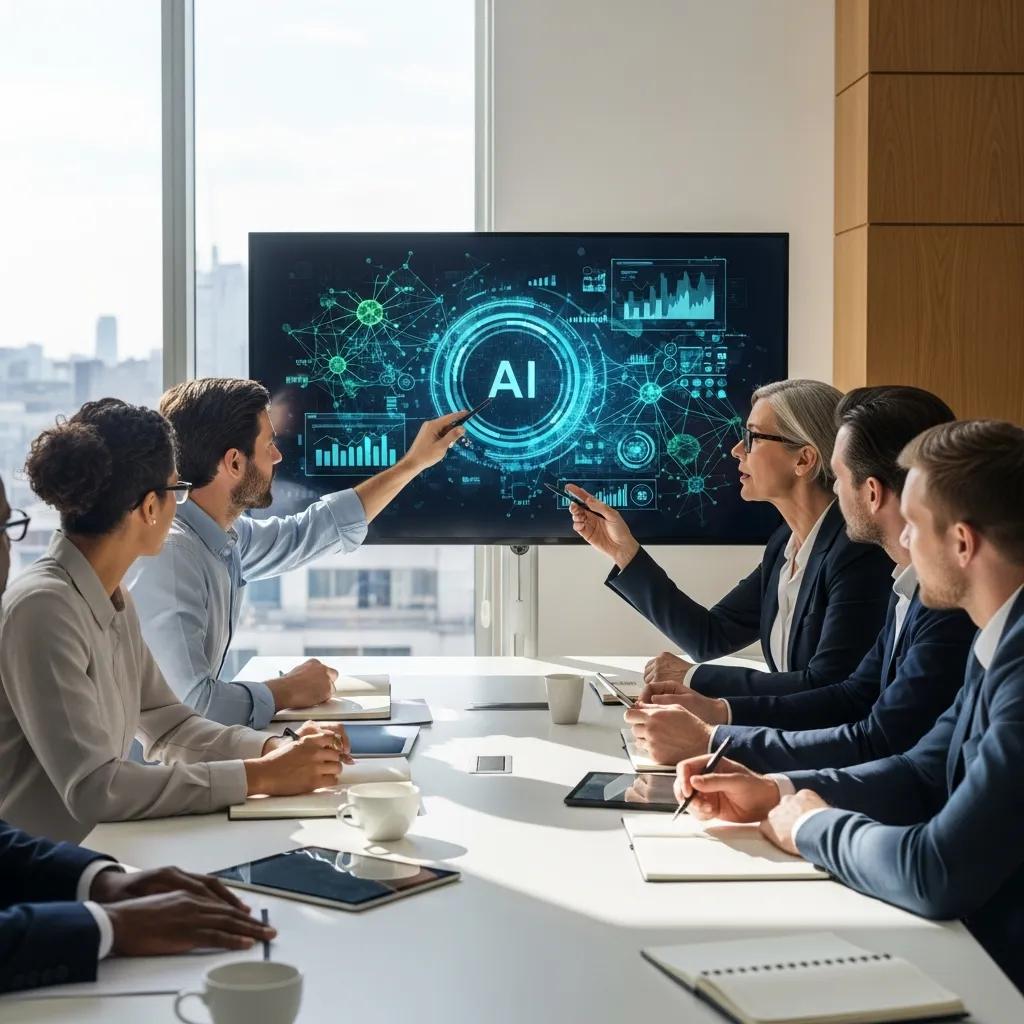Feeling overwhelmed by the buzz around AI? You’re not alone. Many small to mid-sized business owners are curious about AI tool applications but unsure where to begin. This post cuts through the hype, offering practical advice on how to use AI to boost your team’s well-being, productivity, and work-life balance. We’ll look at specific AI tool application examples, explore their benefits, and address common concerns about integrating AI into the workplace.
AI Tools Application: A Practical Guide for Businesses
The global AI market is exploding, predicted to reach $1.8 trillion by 2030, according to Grand View Research. This significant growth shows AI is transforming business operations. But what exactly are AI tools, and how can they benefit your business?
AI tools are software applications powered by artificial intelligence algorithms. These AI apps allow them to perform tasks that typically require human input. Examples include problem-solving, decision-making, and video generation.
Boosting Productivity with AI
AI tools can significantly impact employee productivity. This is especially true in project management, scheduling, content creation, and customer support.
Project management tools like Asana now include AI features. These AI features automate tasks, schedule meetings, and draft emails. AI-powered scheduling apps like Reclaim analyze work patterns.
This frees up time and increases employees’ focus. A free AI tool can enhance team communication, especially in text prompts and natural language processing. Improved focus helps meet deadlines and reach goals. Using AI image generation can also take a load off your plate.
Improving Employee Well-being With AI
Increased productivity through AI tools can improve profits. Many AI tools also directly boost employee well-being. Well-being also impacts work performance.
Meditation apps like Calm and well-being assistants like Woebot offer AI-driven sessions and support. These tools offer personalized advice and coping techniques, which reduces stress.
Services like Ask AI, powered by the ChatGPT API and GPT-4, can also improve morale. It increases excitement for employees who want more insight and answers to questions. This can reduce anxiety related to stressors and deadlines.
Streamlining Customer Service with AI Chatbots
AI chatbots are changing customer support. Chatbots like Gemini and Ask AI are reshaping how businesses offer help.
These bots are transforming customer support. They handle initial interactions, answer simple questions, and offer instant support. Benefits include faster response times and smoother service requests.
Using AI chatbots and tools that include the AI models frees up staff. These AI productivity tools offer significant improvements for businesses.
Enhancing Creativity and Content Creation with AI
Many marketers overlook how AI tools can boost creative output. These tools can generate text, art, designs, and marketing copy.
Platforms like Jasper AI offer custom brand voices. Services like DALL-E 3 offer AI image generation. These tools help create tailored content while reducing costs.
Uses range from product descriptions and web copy to social media updates and visuals. AI script generation tools also assist with creating videos and various creative writing.
AI tools are also extremely beneficial to writers looking for fresh perspectives on creative projects. They offer AI script generation, story ideas, and character development. AI-powered productivity tools are not limited to corporate settings; creative endeavors are an emerging and dynamic application for AI tools.
Addressing Concerns About AI Tools Application
With growing data privacy concerns related to AI, responsible implementation is critical. This includes AI models and generative AI features.
Understanding AI data management fosters trust and empowers leaders. It allows leaders to protect confidential materials.
Responsible AI usage avoids negative impacts. It strengthens trust in leadership. By leveraging AI’s strengths responsibly, companies safeguard privacy and increase satisfaction. Using AI assistant tools in an ethical way has also been shown to benefit productivity in certain use cases.
FAQs about AI Tool Application
Which application is used for AI?
Many applications incorporate AI. Common examples include virtual assistants (like Siri and Alexa). Others include AI chatbots, image generators (like DALL-E 3 and Midjourney), and writing assistants (Grammarly, QuillBot). AI is also used in productivity tools like Microsoft 365 and Google Workspace. Free AI tools, in contrast to paid productivity tool services like Jasper AI are a helpful introduction to exploring generative AI’s potential.
What are AI tools used for?
AI tools serve various purposes. These purposes include automating tasks and improving decision-making. They also enhance creativity, streamline customer service, and boost employee well-being. AI image generation helps to generate and edit images quickly, and other tools support healthcare and finance industries.
What’s that AI app everyone is using?
Popularity shifts, but ChatGPT remains widely used. It’s used for tasks like content generation, answering questions, and coding. Other commonly used apps include Midjourney and DALL-E 3. Meta recently launched Meta AI, a free AI chat and art generator. AI video generators, while rapidly advancing in sophistication, are still relatively niche in adoption when compared with chat or image generators.
What are the top 5 generative AI tools?
The “top” tools depend on the user’s needs. However, some popular generative AI tools include: ChatGPT (for text), Midjourney and DALL-E 3 (for images), Runway (for video), and Synthesia (for videos with AI avatars).
Unlocking the Future: AI's Transformative Potential
The AI boom is a real trend. Generative AI tools like ChatGPT and Gemini are now common in workplaces. The right tool for your needs will vary depending on the task at hand. Microsoft Copilot is a free and easy to implement option with features that are continually being enhanced.
Smart implementation and ongoing analysis of new AI tools are key to business growth. This is true for teams of all sizes. Free ai is great if you’re still on the fence.
Using AI tools in workflows isn’t always about complex upgrades. Even small improvements can boost productivity for your team or small business. Staying curious about AI will set your team up for success.






